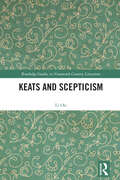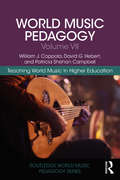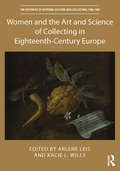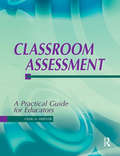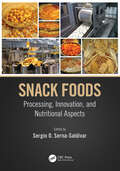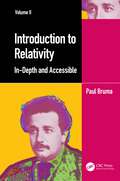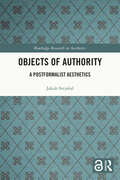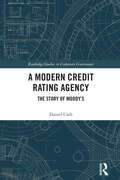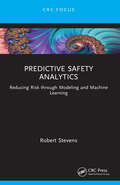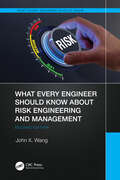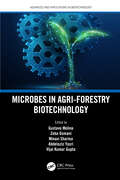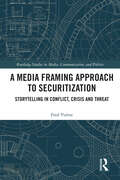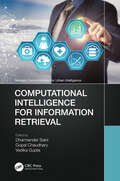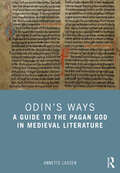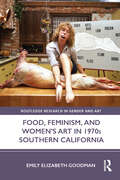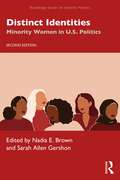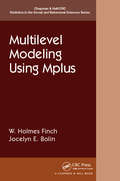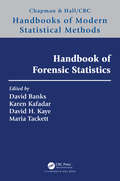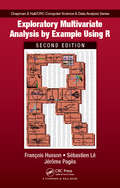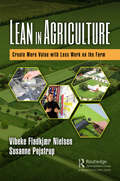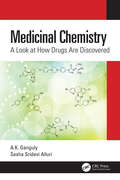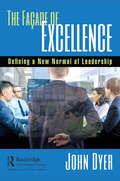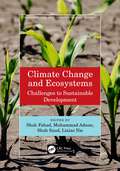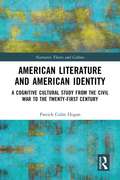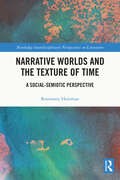- Table View
- List View
Keats and Scepticism (Routledge Studies in Nineteenth Century Literature)
by Li OuKeats and Scepticism explores Keats’s affinity with the philosophical tradition of scepticism and reads Keats’s poetry anew in the light of this affinity. It suggests Keats’s links with the origin of scepticism in ancient Greece as recorded in Sextus Empiricus’s Outlines of Scepticism. It also discusses Keats’s connections with Montaigne, the most important Renaissance inheritor of Pyrrhonian scepticism; Voltaire, the Enlightenment philosophe whose sceptical ideas made an indelible impact on Keats; and Hume, the most thoroughgoing sceptic after antiquity. Other than Keats’s affinitive ideas with these sceptical thinkers, this book is particularly interested in Keats’s experiments with the peculiar language, forms, modes, and genres of poetry to convey the non-dogmatic philosophy. In this light, it re-reads Isabella, ‘La Belle Dame sans Merci’, the 1819 odes, the two Hyperions, King Stephen, and Lamia, all of which reveal Keats’s self-reflexive and radical sceptical poetics in challenging poetic dogmas and conventions. This book is for Keats lovers, students, teachers, scholars, or non-academic readers who are interested in Romanticism, nineteenth-century studies, or poetry and philosophy in general. This original, accessible interdisciplinary study aims to offer the reader a fresh perspective to read Keats and appreciate the quintessential Keatsian poetics.
World Music Pedagogy, Volume VII: Teaching World Music in Higher Education (Routledge World Music Pedagogy Series)
by William J. Coppola David G. Hebert Patricia Shehan CampbellWorld Music Pedagogy, Volume VII: Teaching World Music in Higher Education addresses a pedagogical pathway of varied strategies for teaching world music in higher education, offering concrete means for diversifying undergraduate studies through world music culture courses. While the first six volumes in this series have detailed theoretical and applied principles of World Music Pedagogy within K-12 public schools and broader communities, this seventh volume is chiefly concerned with infusing culture-rich musical experiences through world music courses at the tertiary level, presenting a compelling argument for the growing need for such perspectives and approaches.These chapters include discussions of the logical trajectories of the framework into world music courses, through which the authors seek to challenge the status quo of lecture-only academic courses in some college and university music programs. Unique to this series, each of these chapters illustrates practical procedures for incorporating the WMP framework into sample classes. However, this volume (like the rest of the series) is not a prescriptive "recipe book" of lesson plans. Rather, it seeks to enrich the conversation surrounding cultural diversity in music through philosophically-rooted, social justice-conscious, and practice-oriented perspectives.
Women and the Art and Science of Collecting in Eighteenth-Century Europe (The Histories of Material Culture and Collecting, 1700-1950)
by Arlene Leis Kacie L. WillsThrough both longer essays and shorter case studies, this book examines the relationship of European women from various countries and backgrounds to collecting, in order to explore the social practices and material and visual cultures of collecting in eighteenth-century Europe.It recovers their lives and examines their interests, their methodologies, and their collections and objects—some of which have rarely been studied before. The book also considers women’s role as producers, that is, creators of objects that were collected. Detailed examination of the artefacts—both visually, and in relation to their historical contexts—exposes new ways of thinking about collecting in relation to the arts and sciences in eighteenth-century Europe. The book is interdisciplinary in its makeup and brings together scholars from a wide range of fields.It will be of interest to those working in art history, material and visual culture, history of collecting, history of science, literary studies, women’s studies, gender studies, and art conservation.
Classroom Assessment: A Practical Guide for Educators
by Dr Craig Mertler• Provides detailed information on· the functions of assessment;· how to construct, administer, and interpret the results of teacher-developed assessment techniques; and· how to interpret the results of externally developed instruments such as standardized tests.• Both traditional and newer, alternative assessment techniques are covered.• Advantages and disadvantages of each assessment technique are discussed.• A companion website helps both instructors and students obtain additional information on topics of special interest to them.• Numerous examples of the principles and procedures make it easy for students to understand the material.• The highly practical nature of this book stems from the focus on how assessment intertwines with other everyday activities in classrooms.• Measurement theory and computational procedures that are unlikely to be used by classroom teachers are de-emphasized, producing a textbook that provides comprehensive coverage without being unnecessarily technical.
Snack Foods: Processing, Innovation, and Nutritional Aspects
by Sergio O. Serna-SaldivarThe diverse segments of the snack industries that generate close to $520 billion of annual sales are adapting to new consumer´s expectations, especially in terms of convinience, flavor, shelf life, and nutritional and health claims. Snack Foods: Processing, Innovation, and Nutritional Aspects was conceptualized to thoroughly cover practical and scientific aspects related to the chemistry, technology, processing, functionality, quality control, analysis, and nutrition and health implications of the wide array of snacks derived from grains, fruits/vegetables, milk and meat/poultry/seafood. This book focuses on novel topics influencing food product development like innovation, new emerging technologies and the manufacturing of nutritious and health-promoting snacks with a high processing efficiency. The up-to-date chapters provide technical reviews emphasising flavored salty snacks commonly used as finger foods, including popcorn, wheat-based products (crispbreads, pretzels, crackers), lime-cooked maize snacks (tortilla chips and corn chips), extruded items (expanded and half products or pellets), potato chips, peanuts, almonds, tree nuts, and products derived from fruits/vegetables, milk, animal and marine sources. Key Features: Describes traditional and novel processes and unit operatios used for the industrial production of plant and animal-based snacks. Depicts major processes employed for the industrial production of raw materials, oils, flavorings and packaging materials used in snack food operations. Contains relevant and updated information about quality control and nutritional attributes and health implications of snack foods. Includes simple to understand flowcharts, relevant information in tables and recent innovations and trends. Divided into four sections, Snack Foods aims to understand the role of the major unit operations used to process snacks like thermal processes including deep-fat frying, seasoning, packaging and the emerging 3-D printing technology. Moreover, the book covers the processing and characteristics of the most relevant raw materials used in snack operations like cereal-based refined grits, starches and flours, followed by chapters for oils, seasoning formulations and packaging materials. The third and most extensive part of the book is comprised of several chapters which describe the manufacturing and quality control of snacks mentioned above. The fourth section is comprised of two chapters related to the nutritional and nutraceutical and health-promoting properties of all classes of snacks discussed herein.
Introduction to Relativity Volume II: In-Depth and Accessible
by Paul BrumaE=mc² is known as the most famous but least understood equation in physics. This two-volume textbook illuminates this equation and much more through clear and detailed explanations, new demonstrations, a more physical approach, and a deep analysis of the concepts and postulates of Relativity.Volume II contains, notably: In Special Relativity: complementary explanations, alternative demonstrations relying on more advanced means and revealing other aspects. Further topics: accelerated objects and the Relativistic force, nuclear reactions, the use of hyperbolic trigonometry, the Lagrangian approach, the Relativistic Maxwell’s equations. In General Relativity: tensors, the affine connection, the covariant derivative, the geodesic equation, the Schwarzschild solution with two of its great consequences: black holes and the bending of light; further axiomatic considerations on time, space, matter, energy and light speed. In Cosmology: the FLRW Metric, the Friedman equation, the cosmological constant, the four ideal cosmological Models. These subjects are presented in a concrete and incremental manner, and illustrated by many case studies. The emphasis is placed on the theoretical aspects, with rigorous demonstrations based on a minimum set of postulates. The mathematical tools dedicated to Relativity are carefully explained for those without an advanced mathematical background. Both volumes place an emphasis on the physical aspects of Relativity to aid the reader’s understanding and contain numerous questions and problems (147 in total). Solutions are given in a highly detailed manner to provide the maximum benefit to students. This textbook fills a gap in the literature by drawing out the physical aspects and consequences of Relativity, which are otherwise often second place to the mathematical aspects. Its concrete focus on physics allows students to gain a full understanding of the underlying concepts and cornerstones of Relativity.
Objects of Authority: A Postformalist Aesthetics (Routledge Research in Aesthetics)
by Jakub StejskalIs the celebrated elegance of Cycladic marble figurines an effect their Early Bronze Age producers intended? Can one adequately appreciate an Assyrian regal statue described by a cuneiform inscription as beautiful? What to make of the apparent aesthetic richness of the traditional cultures of Melanesia, which, however, engage in virtually no recognizable aesthetic discourse? Questions such as these have been formulated and discussed by scholars of remote cultures against the backdrop of a general scepticism about the prospects of escaping the conditioning of one’s own aesthetic culture and attuning to the norms of a remote one. This book makes a radical move: it treats the remote observers’ lack of aesthetic insight not as a hindrance to aesthetic analysis, but as a condition requiring an aesthetic theory that would make room for an aesthetic analysis independent of the model of competent aesthetic judgement or appreciation. Objects of Authority represents a rare effort at bringing together methods and concepts that are often addressed by separate disciplines. It will appeal to scholars and advanced students working on philosophical, art-historical, and anthropological theories of visual art and material culture.
A Modern Credit Rating Agency: The Story of Moody’s (Routledge Studies in Corporate Governance)
by Daniel CashThis book aims to present a picture of one of the world’s leading credit rating agencies. Credited as being the first credit rating agency, Moody’s stands as the epitome of the rating sector and all that it effects. However, outside of internal and non-public histories compiled within the rating agency itself, the story of Moody’s has never been told, until now. However, this is not a historical book. Rather, this book paints a picture of Moody’s on a wider canvas that introduces the concept of rating to you, taking into account the origins of the sector, the competitive battles that formed the modern-day oligopoly, and the characters that have each taken their turn on sculpting the industry that, today, is critical to the modern economy.The book is a story of personable people who provided the market with what it needed, but it is more than that. It is a story of conflict, impact, strategy, and most of all the relationship between big business and modern society. Standing as the gatekeeper to the capital markets that form the core of modern society, Moody’s represents the very best of what the marketplace can produce, but also the very worst. This story takes in economic crises in the antebellum US, the Panics of the early 1900s, the Wall Street Crash and the Great Depression and, of course, the Global Financial Crisis. It does this because, at the heart of each one was a member of the rating industry or the reporting industry that preceded it. Associated with almost any financial scandal you may care to remember the credit rating agencies, in their often-uncomfortable role as gatekeepers, have their fingerprints on most financial scandals and calamities. This book tells the story of the industry’s founding member.
Predictive Safety Analytics: Reducing Risk through Modeling and Machine Learning (Reliability, Maintenance, and Safety Engineering)
by Robert StevensNearly all our safety data collection and reporting systems are backwardlooking: incident reports; dashboards; compliance monitoring systems; and so on. This book shows how we can use safety data in a forward-looking, predictive sense.Predictive Safety Analytics: Reducing Risk through Modeling and Machine Learning contains real use cases where organizations have reduced incidents by employing predictive analytics to foresee and mitigate future risks. It discusses how Predictive Safety Analytics is an opportunity to break through the plateau problem where safety rate improvements have stagnated in many organizations. The book presents how the use of data, coupled with advanced analytical techniques, including machine learning, has become a proven and successful innovation. Emphasis is placed on how the book can “meet you where you are” by illuminating a path to get there, starting with simple data the organization likely already has. Highlights of the book are the real examples and case studies that will assist in generating thoughts and ideas for what might work for individual readers and how they can adapt the information to their particular situations.This book is written for professionals and researchers in system reliability, risk and safety assessment, quality control, operational managers in selected industries, data scientists, and ML engineers. Students taking courses in these areas will also find this book of interest to them.
What Every Engineer Should Know About Risk Engineering and Management (ISSN)
by John X. WangCompletely updated, this new edition uniquely explains how to assess and handle technical risk, schedule risk, and cost risk efficiently and effectively for complex systems that include Artificial Intelligence, Machine Learning, and Deep Learning. It enables engineering professionals to anticipate failures and highlight opportunities to turn failure into success through the systematic application of Risk Engineering. What Every Engineer Should Know About Risk Engineering and Management, Second Edition discusses Risk Engineering and how to deal with System Complexity and Engineering Dynamics, as it highlights how AI can present new and unique ways that failures can take place. The new edition extends the term "Risk Engineering" introduced by the first edition, to Complex Systems in the new edition. The book also relates Decision Tree which was explored in the first edition to Fault Diagnosis in the new edition and introduces new chapters on System Complexity, AI, and Causal Risk Assessment along with other chapter updates to make the book current. Features Discusses Risk Engineering and how to deal with System Complexity and Engineering Dynamics Highlights how AI can present new and unique ways of failure that need to be addressed Extends the term "Risk Engineering" introduced by the first edition to Complex Systems in this new edition Relates Decision Tree which was explored in the first edition to Fault Diagnosis in the new edition Includes new chapters on System Complexity, AI, and Causal Risk Assessment along with other chapters being updated to make the book more current The audience is the beginner with no background in Risk Engineering and can be used by new practitioners, undergraduates, and first-year graduate students.
Microbes in Agri-Forestry Biotechnology (Advances and Applications in Biotechnology)
by Gustavo Molina Zeba Usmani Minaxi Sharma Abdelaziz Yasri Vijai Kumar GuptaThis book explores recent advances on the use of microbes for agri-forestry biotechnological applications. It provides technical concepts and discussions on the use of microorganisms for processes such as bioprocessing, bioremediation, soil enhancement, aquaponics advances, and plant-host symbiosis. The book provides an overview of the microbial approach to the tools and processes used in agriculture and forestry that make or modify products, improve plants for specific uses, and make use of livestock in agricultural systems. The authors discuss the main process conditions that enhance agri-forestry applications with the use of microbes and introduce the use of genetically modified (GM) microbes in agrobiotechnology. Finally, the authors explore the main technological advances in the production of secondary metabolites with potential applications in agri-forestry. This book is intended for biotechnologists, biologists, bioengineers, biochemists, microbiologists, food technologists, enzymologists, and related researchers.
A Media Framing Approach to Securitization: Storytelling in Conflict, Crisis and Threat (Routledge Studies in Media, Communication, and Politics)
by Fred VulteePresenting securitization as a communication issue, this book combines media framing with the theory of securitization to explain how the discourse of security informs media content and what happens to policy and public understanding when it does. Because securitization studies the construction of threats to societal structures as well as political-institutional structures, this book addresses security framing as a question of identity and the ability of political-cultural elites and media actors to manipulate it. After setting out how its theories work together, the book turns to news and its effects: How do media accounts make empirical sense of the world when they are bound by the need to make social-cultural sense first? How does "security" look in competing news accounts, and how do securitizing frames affect attitudes toward policies and political elites? Last, the book asks how academics and professionals can address the challenges to a democratic public’s role in decision-making created by the manipulation of security.Bringing together distinct fields within communication studies to reflect on the pressing issue of securitization, this book will be a key resource for scholars and students working in the fields of mass communication, policy studies, critical linguistics and international relations, as well as risk and crisis communication.
Computational Intelligence for Information Retrieval (Sensors Communication for Urban Intelligence)
by Dharmender Saini Gopal Chaudhary Vedika GuptaThis book provides a thorough understanding of the integration of computational intelligence with information retrieval including content-based image retrieval using intelligent techniques, hybrid computational intelligence for pattern recognition, intelligent innovative systems, and protecting and analysing big data on cloud platforms. The book aims to investigate how computational intelligence frameworks are going to improve information retrieval systems. The emerging and promising state-of-the-art of human–computer interaction is the motivation behind this book. The book covers a wide range of topics, starting from the tools and languages of artificial intelligence to its philosophical implications, and thus provides a plethora of theoretical as well as experimental research, along with surveys and impact studies.Further, the book aims to showcase the basics of information retrieval and computational intelligence for beginners, as well as their integration, and challenge discussions for existing practitioners, including using hybrid application of augmented reality, computational intelligence techniques for recommendation systems in big data, and a fuzzy-based approach for characterization and identification of sentiments.
Odin’s Ways: A Guide to the Pagan God in Medieval Literature
by Annette LassenThis book is about the Old Norse god Odin. It includes references to all occurrences of Odin in the Old Norse/Icelandic texts, including Saxo’s Gesta Danorum, the eddic poems, Snorri’s Edda, and Ynglinga saga and analyses the high medieval reception and literary representations of Odin rather than the religious character of the god. This is the only existing study of Odin in all the Old Norse/Icelandic texts and applies a contextual method: the different guises of Odin are studied on the basis of the various textual contexts and on their background in the literary and Christian intellectual milieu of the time. Contrary to existing studies, this method is non-reductive in that it does not aim at providing a synthesis about Odin’s original nature on the basis of the differing textual uses of Odin in the Middle Ages. The book argues that the perceived complexity of Odin, often highlighted in research, is first and foremost a function of the complex textual material spanning a wide variety of genres each with its particular literary conventions and of the reception of Odin in early modern and modern mythological studies.
Food, Feminism, and Women’s Art in 1970s Southern California (Routledge Research in Gender and Art)
by Emily Elizabeth GoodmanThis book explores how feminist artists continued to engage with kitchen culture and food practices in their work as women’s art moved from the margins to the mainstream.In particular, this book examines the use of food in the art practices of six women artists and collectives working in Southern California—a hotbed of feminist art in the 1970s—in conjunction with the Women’s Art Movement and broader feminist groups during the era of the Second Wave. Focused around particular articulations of food in culture, this book considers how feminist artists engage with issues of gender, labor, class, consumption, (re)production, domesticity, and sexuality in order to advocate for equality and social change.The book will be of interest to scholars working in art history, food studies, and gender and women’s studies.
Distinct Identities: Minority Women in U.S. Politics (Routledge Series on Identity Politics)
by Nadia E. Brown Sarah Allen GershonThe second edition of Distinct Identities continues to provide a sophisticated yet accessible introduction to the complexities of the politics, social structures, and cultural contexts that animate how women of color engage in and shape U.S. politics. Keeping the structure of the original volume, this text represents the diverse and innovative scholarship being conducted in this field while covering the core topics in gender politics.What’s New: Chapters on queer women of color and the role of women of color and social movements. Chapters on the strategies that women of color use to run for office, where they run, political newcomers (Asian and Indigenous women). Chapters on the experiences of women of color office holders. Chapters on policy analysis and the media’s role in shaping the political agenda of women of color political elites. Distinct Identities pushes the boundaries of traditional intersectional scholarship and responds to America’s rapidly diversifying demographics and political culture. It reflects cutting-edge scholarship and provides readers with insight into where the field of women of color politics will head in the coming years.
Multilevel Modeling Using Mplus (Chapman & Hall/CRC Statistics in the Social and Behavioral Sciences)
by Holmes Finch Jocelyn BolinThis book is designed primarily for upper level undergraduate and graduate level students taking a course in multilevel modelling and/or statistical modelling with a large multilevel modelling component. The focus is on presenting the theory and practice of major multilevel modelling techniques in a variety of contexts, using Mplus as the software tool, and demonstrating the various functions available for these analyses in Mplus, which is widely used by researchers in various fields, including most of the social sciences. In particular, Mplus offers users a wide array of tools for latent variable modelling, including for multilevel data.
Handbook of Forensic Statistics (ISSN)
by David Banks, Karen Kafadar, David H. Kaye and Maria TackettHandbook of Forensic Statistics is a collection of chapters by leading authorities in forensic statistics. Written for statisticians, scientists, and legal professionals having a broad range of statistical expertise, it summarizes and compares basic methods of statistical inference (frequentist, likelihoodist, and Bayesian) for trace and other evidence that links individuals to crimes, the modern history and key controversies in the field, and the psychological and legal aspects of such scientific evidence.Specific topics include uncertainty in measurements and conclusions; statistically valid statements of weight of evidence or source conclusions; admissibility and presentation of statistical findings; and the state of the art of methods (including problems and pitfalls) for collecting, analyzing, and interpreting data in such areas as forensic biology, chemistry, and pattern and impression evidence. The particular types of evidence that are discussed include DNA, latent fingerprints, firearms and toolmarks, glass, handwriting, shoeprints, and voice exemplars.
Exploratory Multivariate Analysis by Example Using R (Chapman & Hall/CRC Computer Science & Data Analysis)
by Francois Husson Sebastien Le Jérôme PagèsFull of real-world case studies and practical advice, Exploratory Multivariate Analysis by Example Using R, Second Edition focuses on four fundamental methods of multivariate exploratory data analysis that are most suitable for applications. It covers principal component analysis (PCA) when variables are quantitative, correspondence analysis (CA) a
Lean in Agriculture: Create More Value with Less Work on the Farm
by Vibeke Fladkjaer Nielsen Susanne PejstrupResponding to a recent surge in interest and application, this book is the first to comprehensively address how Lean thinking and tools can be implemented in agriculture and agribusiness. This tactical guide breaks down barriers, clearly depicting how improvement techniques originally developed for factories can derive the same powerful results on farms.Expert Lean farming consultants, Susanne Pejstrup and Vibeke Fladkjaer Nielsen, present these methods in a clear, easy-to-read style, accessible to farmers all over the world. Case studies from multiple farm types – including crops, pigs and dairy cattle – demonstrate how respect for people, continuous improvement, and visual management techniques can improve resilience and profitability on the farm. Richly illustrated, Lean in Agriculture appeals not only to farmers, but to farm workers, food processing companies, veterinarians, consultants and other stakeholders in the agribusiness sector.Key Features: Translates Lean thinking into agricultural terms. Takes a people-centric approach to a Lean agricultural production system. Serves as an implementation guide , with clear writing and concise, easy-to-follow instructions tailored to the agricultural sector. Illustrates agriculture-specific Lean implementation with a wide range of case studies and memorable images.
Medicinal Chemistry: A Look at How Drugs Are Discovered
by A.K. Ganguly Sesha Sridevi AlluriMedicinal Chemistry: A Look at How Drugs Are Discovered is written for those who are interested in learning how drugs are discovered. Compared to other books on the market, this text takes a different approach by presenting the subject on chemical reaction mechanism terms, which ideally makes the subject matter more interesting and easier to comprehend. The authors describe the drug discovery process, from advancing an initial lead to the approval process, and include drug discovery sources. Additional features: Explains medicinal chemistry on chemical mechanism terms, allowing for a more interesting and easier to comprehend text Includes valuable insights toward the various pathways taken at pharmaceutical industries in drug discoveries Improved by including questions raised and suggestions made from students in the authors’ medicinal chemistry classes This book will benefit both upper level undergraduates and graduates studying in the fields of medicinal chemistry and drug discovery, as well as scientists working in the pharmaceutical industry.
The Façade of Excellence: Defining a New Normal of Leadership
by John DyerThe crucial need to substitute true leadership for bad management practices such as Management By Objectives (MBO) and the use of fear is now well known and was often championed by Dr. W. Edwards Deming. While significant progress has been made, many organizations (especially outside of manufacturing) are either just getting started with their improvement efforts or they are faking their way forward (going through the motions), trying to imitate what they have read in books or have seen at conferences. The executives of these organizations might give permission for the tools of Lean and Six Sigma to be taught but many of them still refuse to look in a mirror and change their own leadership style. They have built a "façade of excellence" that crumbles quickly whenever a bit of chaos is introduced. Not being able to sustain improvements over the long term is one of the top complaints from improvement professionals. What ingredient is missing that prohibits changes to occur throughout the leadership ranks that might create a culture that embraces teamwork, collaboration and improvement? To start, what exactly do we mean by leadership? The common mistake is to try and put all effective leaders into the same box. Leadership actually has many dimensions and several definitions. This book explores four different styles of leadership that includes "The Crisis Leader," "The Idea Gathering Leader," "The Team Forming Leader," and "The Empowerment Leader."Each of the four styles is appropriate when given a certain set of circumstances (an organization in trouble needs a "Crisis Leader" for example). The goal is to shift the organization, including the leaders and all of the employees at every level, toward collaboration and empowerment. Why go through the pains to rebuild an organization’s culture and leaders? In the annual "IndustryWeek Magazine - Best Plants" competition, the companies that have made the transition to high performance, fully empowered teams ("The Empowerment Leader"), in general, demonstrate far better results than all other applicants (and they tend to win "Best Place to Work" awards as well).So, what is keeping organizational leaders, especially those in the middle of the organization chart, from adopting the "The Empowerment" leadership style? This book defines and helps the reader understand what this new normal of leadership consists of and: Explains the four different styles of leaders and how these are different than a typical "old style" manager. Indicates which style is appropriate given a certain set of circumstances and how a leader knows when it is time to migrate from one style to another. Illustrates what it means for an organization to shift from a "dictator" culture to one of collaboration and what steps can be taken to help this transformation. Explores the current definition of a "promotable manager" and how this differs from a new normal definition of an outstanding, effective "Empowerment" leader. Defines Mission, Vision, Strategy, and Values and how these four cultural principles fit into the leadership progression model. Shows how the culture within the organization will be different after the adoption of empowered teams and introduces the concept of "Enthusiastic Productivity."
Climate Change and Ecosystems: Challenges to Sustainable Development (Footprints of Climate Variability on Plant Diversity)
by Shah FahadThe global population is projected to increase by 3.3 billion from 6.7 billion in 2008 to 10 billion in 2100. As a result, soil degradation and desertification are growing due to the increasing demand for food, feed, fiber, and fuel on finite soil resources. The problem of global food insecurity may be further worsened by the threat of global warming. Climate change is showing its impacts in terms of increasing temperatures, variable rainfall, and an increase in climate-related extremes such as floods, droughts, cyclones, sea-level rise, salinity, and soil erosion. The agriculture sector is the most sensitive to climate change because the climate of a region/country determines the nature and characteristics of vegetation and crops. Increase in the mean seasonal temperature and decrease in effective precipitation can reduce the duration of many crops, may lead to outbreaks of pests and diseases, and hence reduce final yield ultimately affecting the food security of the country. Despite the positive impact of CO2 fertilization, the net productivity may decrease because of an increase in respiration rate, drought stress, and nutrient deficiency. For example, for every 75 ppm increase in CO2 concentration, rice yields will increase by 0.5 t/ha, but the yield will decrease by 0.6 t/ha for every 1°C increase in temperature. The global agricultural productivity is expected to decrease from 3% to 16% by 2080. The estimated decrease in agricultural productivity in the developing countries is 10%–25% in the 2080s, where average air temperature is already near or above crop tolerance levels. This book is intended to serve as a stimulating collection that will contribute to debate and reflection on the sustainable future of agriculture and food production in the face of global change.Features: This book brings together a multidimensional group of international scholars exploring the ethical dimensions of climate change and ecosystem. New strategies have been pointed out in this book for better sustainable development. This book has been designed to provide a good overview of major challenges facing policymakers, researchers, and ultimately humankind in dealing with climate change. This book summarizes the diverse features of vulnerability, adaptation, and amelioration of climate change in respect to plants, crops, soil, and microbes for the sustainability of the agricultural sector, and, ultimately, food security for the future. This book provides a state-of-the-art description of the physiological, biochemical, and molecular status of the understanding of abiotic stress in plants.
American Literature and American Identity: A Cognitive Cultural Study from the Civil War to the Twenty-First Century (Narrative Theory and Culture)
by Patrick Colm HoganIn recent years, cognitive and affective science have become increasingly important for interpretation and explanation in the social sciences and humanities. However, little of this work has addressed American literature, and virtually none has treated national identity formation in influential works since the Civil War. In this book, Hogan develops his earlier cognitive and affective analyses of national identity, further exploring the ways in which such identity is integrated with cross-culturally recurring patterns in story structure. Hogan examines how authors imagined American identity—understood as universal, democratic egalitarianism—in the face of the nation’s clear and often brutal inequalities of race, sex, and sexuality, exploring the complex and often ambivalent treatment of American identity in works by Charlotte Perkins Gilman, Eugene O’Neill, Lillian Hellman, Djuna Barnes, Amiri Baraka, Margaret Atwood, N. Scott Momaday, Spike Lee, Leslie Marmon Silko, Tony Kushner, and Heidi Schreck.
Narrative Worlds and the Texture of Time: A Social-Semiotic Perspective (Routledge Interdisciplinary Perspectives on Literature)
by Rosemary HuismanThis book brings together a model of time and a model of language to generate a new model of narrative, where different stories with different temporalities and non-chronological modes of sequence can tell of different worlds of human – and non-human – experience, woven together (the ‘texture of time’) in the one narrative. The work of Gerald Edelman on consciousness, J.T. Fraser on time, and M.A.K. Halliday on language is introduced; the categories of systemic functional linguistics are used for detailed analysis of English narrative texts from different literary periods. A summary chapter gives an overview of previous narrative studies and theories, with extensive references. Chapters on ‘temporalization’ and ‘spatialization’ of language contrast the importance of time in narrative texts with the effect of ‘grammatical metaphor’, as described by M.A.K. Halliday, for scientific discourse. Chapters on prose fiction, poetry and the texts of digital culture chart changes in the ‘texture of time’ with changes in the social context: ‘narrative as social semiotic’.
